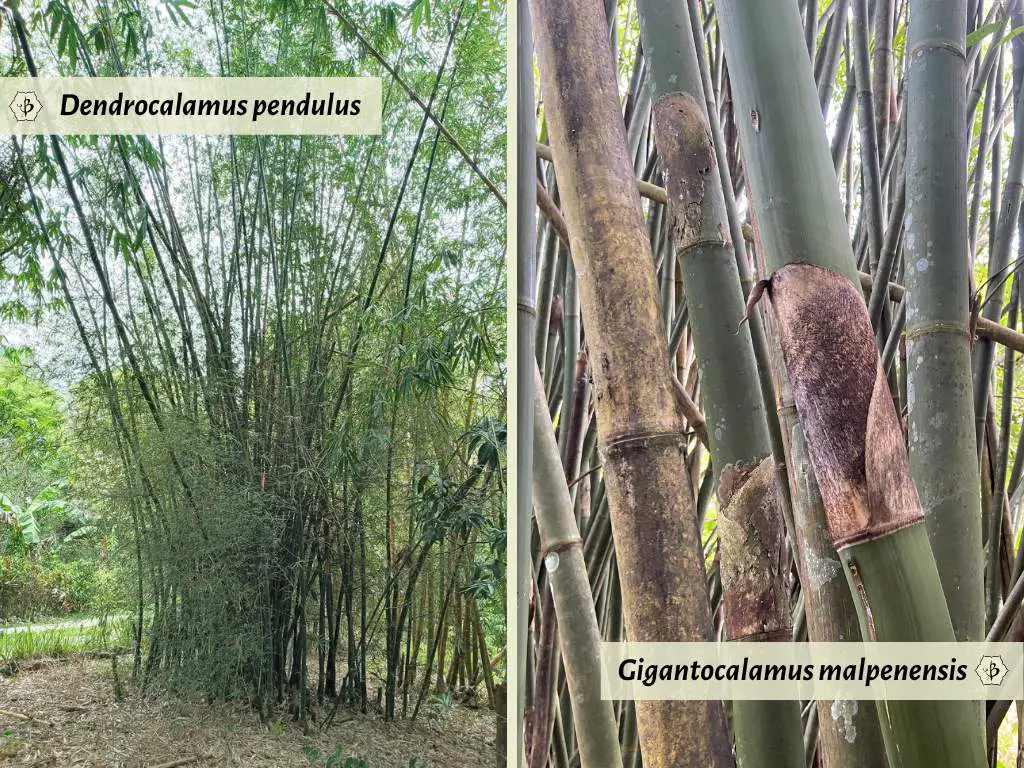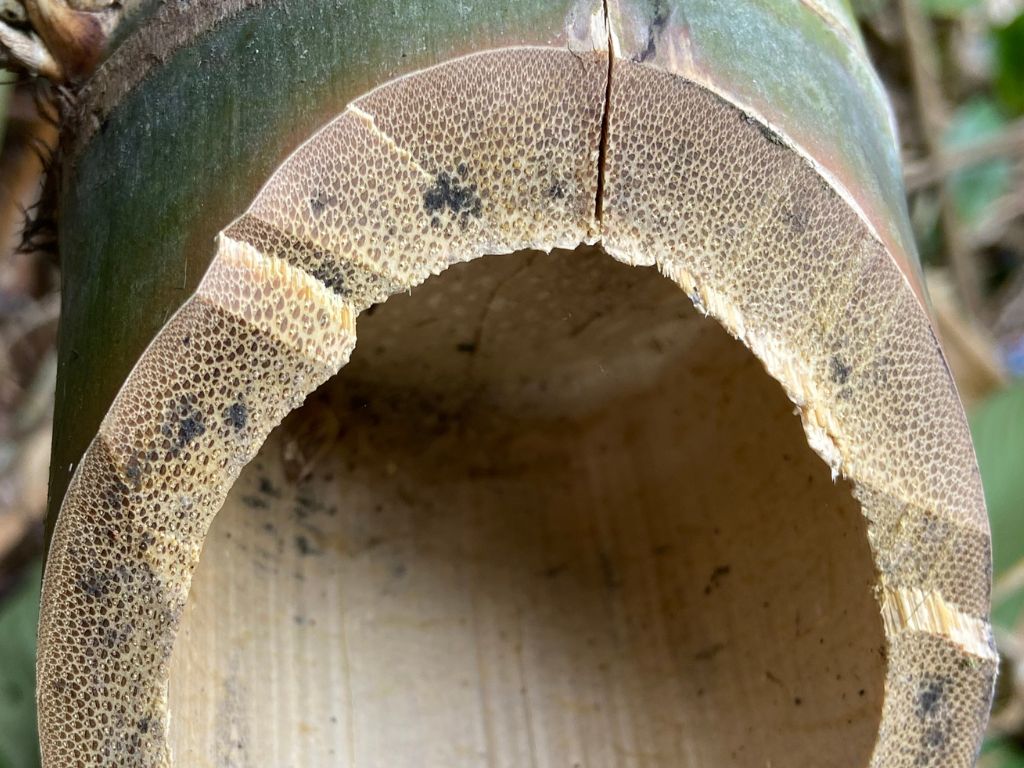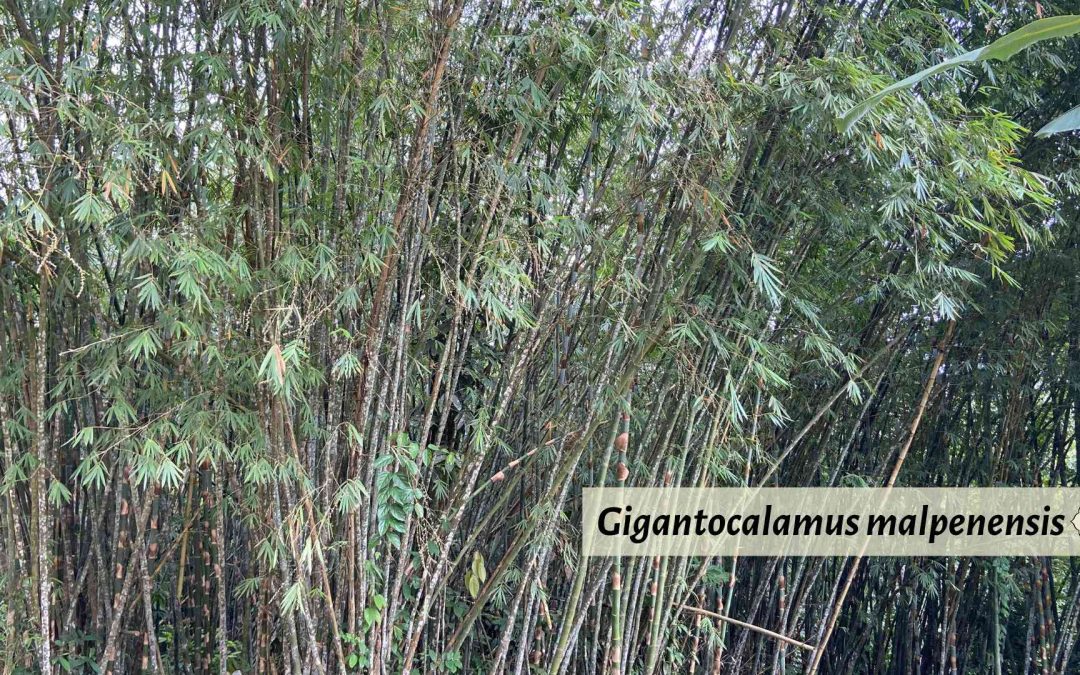Genuinely majestic, Gigantocalamus malpenensis is a natural, intergeneric hybrid, a cross between Gigantochloa scortechinii and Dendrocalamus pendulus, found only in the forested hills of the Malaysian peninsula.

Malaysia is something of a cultural melting pot, a crossroads between Chinese, Indonesian, and colonial influences. The mingling of backgrounds is evident in the language, the architecture, and the mouthwatering cuisine. Like the rest of Southeast Asia, Malaysia also overflows with lush, tropical jungles and forests. Therefore, the conditions are optimal for cross-pollination.
Few spots on Earth, such as the Amazon basin, can rival Malaysia for its biodiversity. The forests are teeming with rare flowers, endangered primates, and exceptional bamboo varieties. Gigantocalamus malpenensis is a shining example of what can happen in the depths of the jungle when an abundance of bamboo species rub shoulder to shoulder, limb to limb, or rhizome to rhizome.

The origins of Gigantocalamus malpenensis
According to the official records, there are about 1,600 different species and cultivars of bamboo. But an excursion into the Andes, the Himalayas, or the far-reaching hinterlands of Southeast Asia will uncover countless new varieties that have yet to be published. Left to her devices, Mother Nature is fertile and prolific. The wheels of evolution keep spinning and the processes of hybridization never grow weary.
What’s remarkable about Gigantocalamus malpenensis is that it’s the product of a cross between two separate genera of bamboo. By studying the DNA, we can trace its heritage back to Gigantochloa scortechinii and Dendrocalamus pendulus, both fairly unusual species in their own right. D. pendulum is a medium-sized bamboo with slender, arching culms, smaller than most varieties of Dendrocalamus. G. scortechinii is very rare, growing only in the same region of Malaysia, and is almost indistinguishable from Gigantocalamus malpenensis without close examination of the ligules and auricles.

Because its ancestors come from the genus Gigantochloa and the genus Dendrocalamus, this exotic offspring goes by the name Gigantocalamus, which is not an officially recognized genus in the conventional sense. And the combination of genera can raise many questions, including: “Will its flowers produce viable seeds?”
The last time I was in Malaysia, in the fall of 2023, we saw a number of these specimens flowering sporadically, so this question of fertility is especially fresh in my mind. It was evident that other clumps that had flowered in the previous year had died, indicating that this bamboo is monocarpic. In other words, it will only flower once, and then dies. We encouraged the locals to collect seeds, and it will be interesting to follow up on the results of that. Many wild bamboo species are very difficult to domesticate, or grow in captivity.
Characteristics of Gigantocalamus malpenensis
Gigantochloa and Dendrocalamus include the largest and some of the most impressive varieties of bamboo. Intermixing of species of genera can lead to unpredictable results, but Gigantocalamus malpenensis is a winner by every measure. It brings together the best qualities of Gigantochloa scortechinii and Dendrocalamus pendulus, resulting in an exceptionally tall, straight, and thick-walled bamboo species. The smooth internodes are also longer than average. Those characteristics make this bamboo an excellent candidate for building materials. Individual, mature culms grow up to 3 or 4 inches in diameter and 60 to 80 feet tall.

Close inspection of the culm cross sections also revealed an unusually high density of vascular bundles and fiber. In the image above, those are the dark spots with the white dots. These tubes run up and down the length of the bamboo, transporting fluids and nutrients.
At the same time, we see almost no parenchyma, or the space between the vascular bundles. That means the biomass of this bamboo is very dense in fiber and low in sugar. Based on these observations, we can safely assume that this species has stronger tensile strength than most bamboo and a greater resistance to pests and insects.
Related reading
To learn more about some of the more exotic bamboo species, take a look at these other engaging articles.
- Bamboo in Thailand: A land of incomparable wonders
- Thyrsocalamus liang: A naturally occurring intergeneric hybrid of Thyrsostachys and Dendrocalamus
- Triple Hybrid: An exquisite product of human intervention
- The World’s Best Bamboo Gardens
FEATURE PHOTO: Gigantocalamus malpenensis flourishes in all its glory on the Malaysian peninsula. Photo by Fred Hornaday.




















